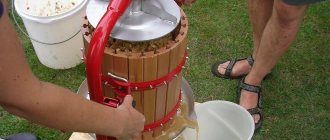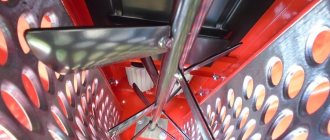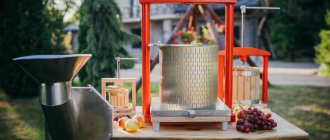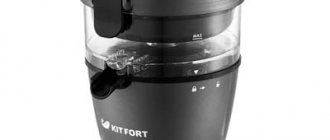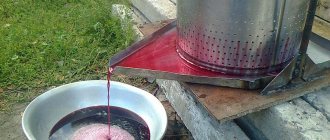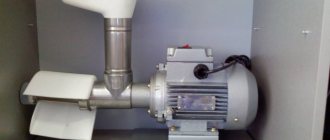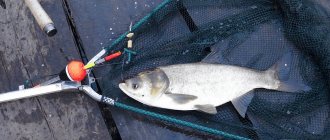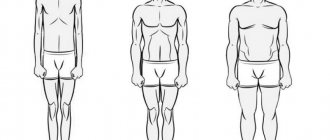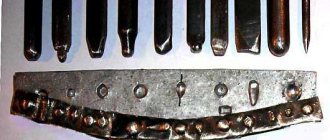Preparing baits from makukha
For fishing purposes, pressed cake in the form of circles is used (crumbed cake can serve exclusively as bait). Their thickness should exceed 3 cm and not break in the hands, and emit a pleasant aroma. Makukha tastes like hard halva. A number of sellers want to get rid of old stocks and rub the circles with fresh oil, but then they have a bitter aftertaste.
The bait must first be prepared by sawing huge “tablets” into pieces of the required size. You will need a fine-toothed hacksaw. You need to cut rectangles with a configuration of 3x3x6 cm. The dust generated during work will be useful for preparing other baits. The prepared bars must be placed in a polyethylene bag and sealed tightly.
Many manufacturers produce pressed meal in the form of sticks, add flavorings to the composition and pack it in hermetically sealed containers. The option is the most preferable, but it is also the most expensive.
Homemade bait
If the quality of the material purchased in a store or market is in doubt, the cake can be prepared at home. Ingredients and equipment needed:
- raw sunflower seeds;
- blender or old coffee grinder - grinding;
- molds with holes - elimination of oil;
- special press - compacting the slurry (it is advisable to buy a ready-made one or try to make it yourself);
- dishes - evaporation.
Without a device that compresses the crushed product, it is almost impossible to create cake at home.
How and from what to make a crown press
To make the device, you will need a pipe up to 40 cm long and an internal diameter of 5-6 cm. 1.5 mm holes are drilled along the entire distance of the metal cylinder every 2 cm. On one side the pipe is closed with a plug in the form of a bottle cap with a cotter pin, and on the other – with a screw press.
Some anglers use jacks, but in such cases it is not always possible to compress the mass to the required consistency.
Homemade makukha production begins with roasting the seeds until half cooked. Then they are crushed in any way (coffee grinder, blender, mortar). The molds are filled tightly with the slurry, then using a special tamping device, the mass is compressed until it stops and at the same time heated in a saucepan. The cake will stick together and the liquid oil will drain.
The procedure lasts about 40 minutes, and all this time you need to press down the mass with force. Remove the resulting flour from the molds only after it has cooled. The pieces should be hard and baked. Carefully clean the mahogany press and store it.
Fishing gear
To fish with such a bait, you need a special equipment - a machka. It can be purchased at the store, or you can also make it yourself. The classic version of the equipment consists of a rod, a vein, a sinker and a double leash. The principle of its operation is no less simple:
- a piece of topcoat is secured with a self-tightening knot;
- cuts are made along the edges of the nozzle;
- hooks on leashes are inserted into the recesses;
- the structure is connected to the main fishing line with a carabiner on a swivel.
In the new type of makushatniks, a hole is made in the dense pulp with a special drill, and a latch in the form of a small eye is inserted into it. The hook is hidden in the corner of the bait.
On the idea of making a juice press with your own hands
For many years we used a Soviet juicer to obtain juice from apples and pears. But we noticed that after processing the pears into juice, the remaining pulp is quite wet. Using improvised means, a third of the volume of juice was squeezed out of the pulp. That is, if 20 kg of fruit yielded 10 liters of juice, then after squeezing the cake we received an additional 3 liters!
This year's harvest is anything but, and the grandchildren need vitamins, so the question arose of urgently purchasing (the apples are already ripe) a press for squeezing juice. But the search in the city was unsuccessful. That’s why we decided to make our own juice press using a car jack. Fortunately, there is a 1500 kg jack available.
Features and advantages of makukha
Features include ease of preparation:
- Makukha is prepared without special equipment or knowledge.
- Using a press you can produce a high-quality product. It is also permissible to use a regular jack, which is used to compress the dust into briquettes.
- There is a special board for rolling out boilies, which facilitates the manufacturing process.
The advantages include low cost and natural ingredients.
Briquettes made independently are liked by fish, as they distinguish between natural and artificial odors, and they always prioritize natural ingredients. Therefore, it is recommended to make makukha only at home.
Design Features
Producing vegetable oil at home using a purchased or self-made press has a number of features that must be taken into account.
- When producing oil at home, the finished product has a two-year shelf life. A home press can be purchased in a serial version or made by yourself.
- Using a household squeeze press, you can extract oil from sunflower seeds, olives and even nuts.
- One of the simplest and most cost-effective ways to make a device for extracting oil is to remake a serial household press designed for squeezing juice from grapes and apples. In such equipment there is no need to change working attachments - it is enough to replace the holder with a device of higher power. This modernization will allow the unit to be used not only for processing olives, but also for squeezing oil from sunflower seeds.
- A home oil press, the basis of which is a worm screw responsible for pressing, can be made using improvised means. When designing such a press, keep in mind that the pressure it will be able to develop will depend on both the diameter of the worm nut and the power of the beam risers. To provide the created device with higher reliability, the beam that serves as the basis of its structure should be made more powerful. These requirements are fully met by a wooden oil press, the mechanism elements of which are made of solid oak. A budget alternative to such a unit is a press, the structural elements of which are made of metal.
- A household press (like any other) used for squeezing oil requires a cylinder without a bottom in its design, which can be used as an ordinary metal barrel. To increase the rigidity of such a cylinder in its lower part, you can take a metal hoop. If a wooden barrel is used as a cylinder, the material from which it is made must be dry and highly hard. The ideal material in this case would be solid oak.
- Important design elements that an oil press should be equipped with include the peeling rollers, which are a pair of replaceable rollers. Their rotation is ensured by gears mounted on the metal racks of the device. On the racks, in addition to the gears, the upper and lower buckets are fixed, as well as a handle, which ensures the rotation of the mechanism elements, or a toggle bucket. Peeling rollers are usually made of wood, and their working surface is lined with a float cloth.
Diagram of a press with a worm screw
Homemade screw press for squeezing oil or juice
What can you catch on top?
You can catch carp, crucian carp, and carp on the top.
Carp can be easily caught using the top of the fish; it is attracted by the aroma of peas and sunflowers.
When fishing for carp, it is recommended to use a heavy sinker and change the top more often. The carp prefers places with strong currents, where it is quickly washed away.
When fishing for crucian carp, makuha is often used for feeding, but when used as bait, you can catch quite large fish.
Do-it-yourself makukha
Prepare makukha for fishing with your own hands at home. There are several recipes for preparing bait; they differ only in the ability to use certain equipment.
Pea flour
Pea powder is the main bait for catching carp. To prepare it you will need:
- 100 g peas.
- 50 g semolina porridge.
- Raw chicken egg.
- Corn oil.
- Honey.
- It is necessary to grind the peas in a blender.
- Add semolina and mix.
- In another bowl, add the egg and 1 tbsp. l. corn oil and honey.
- Later, transfer everything into one bowl and mix until smooth.
- Roll boilies from this dough to the required size and boil them in salted water. After the boilies float up, wait another minute.
- Next you should dry the boilies.
Before using it for fishing, you need to add butter to the boilie bag. Carp will love this scent.
Recipe from "Mikhalych"
To prepare you will need the following:
- Jack.
- Glass with piston.
- Metal plate.
- Sunflower seeds - 30%.
- Bird food - 30%.
- Peas - 15%.
- Crackers - 15%.
- Nuts - 10%.
- Some popcorn.
- Grind all ingredients in a blender.
- Pour them into a glass and press down with a piston.
- Place a metal strip on top and clamp it with a jack.
- Pump the jack up to strength and leave for 4 hours.
- Place the finished briquettes in the air and dry for about a week.
Preparing a briquette is a labor-intensive process that takes 3-4 hours. When pressed with a jack, very hard briquettes are obtained that take longer to dissolve in water.
Seed dust
- Sunflower seeds are lightly toasted.
- Then they need to be crushed with a knife, blender, mortar or any convenient method.
- Metal molds are filled with crushed seeds.
- Using a masher or a press, you need to press the resulting porridge into the mold as hard as possible.
- During all manipulations, the mold should be heated.
- You should not immediately remove the porridge from the mold, otherwise it will begin to disintegrate. It's worth waiting for it to cool down.
- Cooking takes about 1 hour.
- After cooking, makukha should be stored in jars with pressed oil.
- The molds must have removable bottoms to easily remove the briquettes.
- It is not recommended to prepare briquettes long before use, otherwise they will lose their natural smell.
- Makukha should be stored in jars with the lid closed.
- The oil that remains after cooking is perfect for bait.
Top fishing technique
The fish smells the smell of the top from a great distance. But for greater efficiency, the fishing site is pre-fed. Various grains are added to complementary foods: corn, millet and peas. By combining fluff and bait, keeping the fish in one place will not be a problem.
The makushatnik is thrown into the water only after careful preparation of the gear. 3 hours after casting, the topcoat should be replaced due to its complete dissolution. The fish, sensing the smell of the top in the water, swims up to the top and begins to taste it. Carp sucks in food without disassembling it, and only after it enters the mouth does it sift out inedible objects. It is at this moment that he can suck in the hook, and after spitting it out, it will catch on the lip.
When playing, you should kill the fish, since it is much easier to get tired ones. It is necessary to have a landing net when fishing, since when a large specimen is bitten, pulling it ashore is a labor-intensive task.
Preparing gear
Equipment for fishing for makukha should be prepared in advance, but you can also do this directly while fishing. There are a large number of varieties of these gears, but among them there is one that is simpler and more effective.
- Sinker. When fishing for topwater, you should use dovetail and horseshoe sinkers. It is necessary to choose the correct weight: for a reservoir without a current 50-80 g, with a current 90-160 g.
- Fishing line or cord. The recommended diameter of the fishing line is 0.3 mm, and the diameter of the cord is 0.2 mm.
- Hook. The hook size is selected according to the type of fish living in the reservoir; the recommended size is No. 4 and No. 6.
- Leash. It is recommended to use a cord of small diameter - 0.2 mm; when using a metal leash, peaceful fish may be scared.
- Top clasp. Sold in a fishing store. It is recommended to take a couple of pieces at a time when fishing. The mechanism is a loop that holds the sinker and top together. Leashes with hooks are tied to the wide end, and fishing line is attached to the narrow end.
You will need a piece of fishing line or cord measuring 30 cm, which must be threaded through the hole on the sinker from the narrow side to the wide side, then tie 2 knots at the end of the fishing line or cord. The main line should be tied to the fastener on the narrow side. The leash has hooks attached to both sides, and the leash is bent in the middle and tied to the clasp using a loop.
You should make a hole in the bars with a diameter of 4 mm and pass the fishing line through it and the load. Insert the fishing line into the narrow end and tie it to the clasp, then thread it through the hole. Next, you should make small indentations in the crown for the hooks, since they become dull when placing a dense crown.
Choosing gear for catching carp on top
On the shelves of fishing stores it is very difficult to find already made gear for fishing with the top of the head. This forces anglers to make them themselves.
Fishermen differ in their opinions when it comes to the design of fishing tackle. Experienced carp anglers distinguish several main types of such gear. Different elements and devices are selected for gear, combining their properties and characteristics to obtain optimal characteristics.
It is necessary to place the main emphasis on rigid rods; they must withstand the load when playing fish weighing more than ten kilograms
It is worth paying attention to rods for feeder fishing. It is worth choosing rods less than four meters in length, and with a test weight of up to 90 grams. When choosing a reel, you should give preference to spinning reels designed specifically for carp fishing
Must have a rear brake. We recommend choosing 3000 reels. The thickness of the fishing line is selected based on the size of the fish in the intended fishing location. Typically it can range from 0.25 to 0.5 mm. You need to reel in more than 160 meters of fishing line. You need to choose carp hooks, the size is chosen similar to the thickness of the fishing line. The weight of the sinker also depends on the current in the reservoir. If there is a current, it is recommended to use a horseshoe-shaped sinker. If there is no current, then there are no requirements for the shape of the sinker and a regular flat sinker can be successfully used.
Additional recommendations from experienced fishermen
Experienced fishermen note several recommendations when using this bait:
- When making briquettes in a mold, you should choose a mold with a removable bottom in order to squeeze out the briquette using a press.
- You should not make briquettes long before fishing; the smell quickly disappears and the bait becomes useless.
- Bait should be stored in tightly closed jars.
- Do not discard the remaining oil, but use it along with complementary foods.
Preparing makukha is not difficult; it does not require any expensive ingredients. Fishing with makukha always shows stable results and high efficiency as bait and groundbait.
Types of makushatniks
Equipment for catching carp on the top implies the use of two main directions of installation - the blind and sliding method. The simplest design method, considered the classical method, is the blind installation of the nozzle. The sliding method has a number of subtypes when knitting, differs in some nuances during assembly, but at the same time is considered a more sensitive and delicate installation compared to the blind version of the equipment. Next, we will consider these two areas in more detail, revealing the features in the manufacture of rigs and dwelling on the main stages of preparing fishing equipment.
Solid installation
Initially, a lead sinker is prepared for the design, which looks like a flat rectangular plate with the possibility of mounting a winding ring in one of its parts to connect the accessory to the main cord of the tackle and install leashes with hooks. They prepare makukha for fishing by cutting off a piece of bait to fit the size of the plate. For installation, leashes are prepared from thin braided fishing line 0.1 mm, 7 to 12 centimeters long, which are knitted to the winding ring on a sinker. The number of leashes can vary from one to seven depending on the fishing strategy and the activity of the trophy. Hooks are used in a carp direction, numbers 6–8, in the color of the bait used. A briquette cut to size is attached to the plate using two rubber bands, placing them 7–10 mm from the edge of the bait.
Important! The mounted bait briquette must be pressed tightly against the lead plate, without the possibility of slipping out from under the fastening as a result of casting.
The last installation operation is the placement of hooks on the bait, which is achieved by piercing holes in the briquette with a needle or drilling them with a drill and inserting the tips of the hooks into the prepared punctures.
Important! It is mandatory to stick hooks into the corners of the bait. It is from the corners that the carp begins to suck on the tasty morsel of bait.
Having carried out the manipulation algorithm described above, the bait is delivered to the fishing point by casting using a rod.
Sliding installation
You can catch carp using a bait bait by equipping the tackle with a sliding sinker. This method allows you to catch cautious and less active fish . This installation will require a sliding flat lead weight, preferably in the shape of a horseshoe. The sinker is placed on the main cord, limiting its stroke to 30–50 cm with a stopper. A briquette of bait is mounted behind the sinker limiter, also threading it into a hole drilled through on a cord. The cord ends with a loop into which pre-prepared leashes with hooks are knitted, prepared according to the scheme of the blind version of the equipment. The hook tip is inserted into the cake used as bait and bait according to the pattern required for fishing conditions. The result is a sliding rig ready for full fishing.
see also
Comments 13
With hardware it’s clear. Recipes for makukha and plankton in the studio :)))
I haven’t decided on plankton yet, but you don’t have to add anything to the flour; I made it pure, tried it with corn flour, pea flour and ground hemp grains.
They don’t sell hemp grains here (or rather, they sell them, but not the grains). And it’s scary to take it across the border :))) You can’t prove that it’s for fishing.
Hemp does not allow the fish to get enough, it can be replaced with some kind of bait with betaine.
Hemp in bait stimulates fish appetite, but does not satiate
